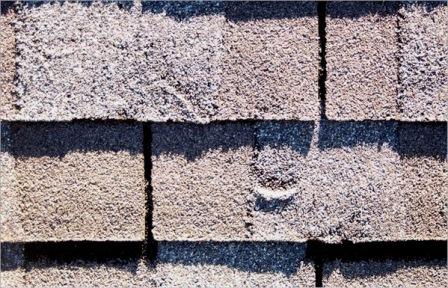Mastering Roof Inspections: Asphalt Composition Shingles, Part 33
by Kenton Shepard and Nick Gromicko, CMI®
DUCTILITY
Ductility is the property that gives shingles their flexibility. Good ductile properties allow shingles to bend and return to their original shape without damage. Shingles that are too flexible will not have good resistance to wind damage and will fracture, crease, tear or pull over the heads of fasteners more easily. Shingles which lack adequate flexibility may also be damaged from handling during transportation or installation.
Filler
Shingle ductility is influenced by the type and amount of filler mixed into the asphalt.
Too little filler added to the asphalt results in shingles being soft and easily damaged during installation. Too much filler makes shingles brittle and shortens their service life. Asphalt shingles may contain up to 60% or more of filler.
Pulverized stone is used as filler, with limestone and dolomite being two of the most common types of stone. This type is a high-performance, engineered, dolomite-based filler designed to maximize heat transfer. Encouraging heat transfer helps extend the shingles' service life by keeping them cooler.
Polymers
Polymers are chains of molecules which link to each other, often called “cross-linked polymers.” They can be used to improve the physical characteristics of a wide variety of materials. In asphalt shingles, they’re added to the asphalt to improve shingle ductility, but they also improve shingle strength and impact resistance. “Polymer-modified bitumen” is a common term in the roofing industry.
The main polymers used in asphalt shingles are styrene butadiene styrene, or SBS. SBS polymers give rubber-like properties to asphalt.
The use of polymers is not limited to roofing materials. The polymer industry is larger than the aluminum, copper and steel industries combined.
Transition Temperature
Transition temperature might also be called the shingle’s “softening point.” This is the temperature below which shingles lose their ductile properties and fracture more easily.

The near roof edge shows scuffing from footfall.
Marring refers to the deformation of the surface of the asphalt. It can be caused by footfall or from equipment, such as ladders.
Asphalt that softens at too high a temperature is brittle and more easily damaged by impact or flexing. Brittle shingles may also be broken more easily during installation.

**************************************************
Learn how to master a roof inspection from beginning to end by reading the entire InterNACHI series: Mastering Roof Inspections.
Take InterNACHI’s free, online Roofing Inspection Course
Mastering Roof Inspections
Roofing Underlayment Types
Inspecting Underlayment on Roofs
Fall-Arrest Systems
Roofing (consumer-targeted)
More inspection articles like this

